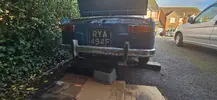Wheelers Workshop
Active Member
Well done, tedious steps I think, we have been these in some form or other with these cars, regarding the idle have you considered a new 1397 Weber idle jet from Weber [ Fast Road Cars Ltd.] as the R8S 1108 one must be too small?
Cheers
Dave
Cheers
Dave







